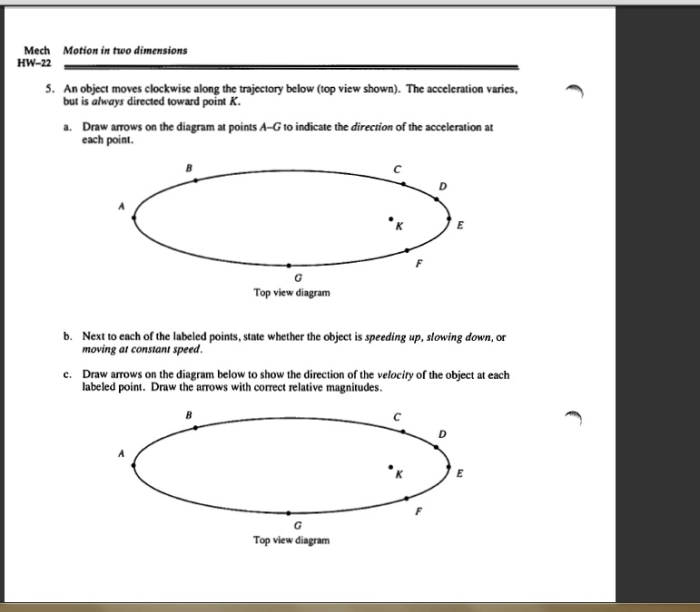Acceleration in one dimension mech hw 13 – Embark on an illuminating journey into the realm of acceleration in one dimension, a concept that governs the dynamic motion of objects. Prepare to unravel its intricacies, master its governing equations, and explore its captivating applications in diverse fields. Brace yourself for an in-depth exploration that will redefine your understanding of this fundamental aspect of mechanics.
Delve into the nuances of acceleration in one dimension, grasping its precise definition and mathematical representation. Discover the kinematic equations that interweave acceleration with other motion variables, empowering you to solve complex motion-related problems with ease. Immerse yourself in the art of crafting motion graphs, unlocking the ability to visualize and interpret acceleration patterns with unparalleled clarity.
1. Acceleration in One Dimension
Acceleration is a measure of how quickly an object’s velocity changes over time. In one dimension, acceleration is a scalar quantity that can be either positive or negative.
The equation for acceleration in one dimension is:
$$a = \frac\Delta v\Delta t$$
where:
- $a$ is acceleration
- $\Delta v$ is the change in velocity
- $\Delta t$ is the change in time
Acceleration can be caused by a change in speed or a change in direction. For example, if a car speeds up from 0 to 60 mph in 10 seconds, its acceleration is 6 mph/s. If a ball is thrown straight up into the air, its acceleration is -9.8 m/s^2 (due to gravity).
2. Kinematic Equations
The kinematic equations are a set of equations that relate acceleration to other motion variables, such as velocity and displacement. The three kinematic equations are:
- $v = u + at$
- $s = ut + \frac12at^2$
- $v^2 = u^2 + 2as$
where:
- $v$ is the final velocity
- $u$ is the initial velocity
- $a$ is the acceleration
- $t$ is the time
- $s$ is the displacement
The kinematic equations can be used to solve problems involving acceleration. For example, if a car starts from rest and accelerates at 2 m/s^2 for 10 seconds, its final velocity is 20 m/s.
3. Motion Graphs
Motion graphs are a graphical representation of an object’s motion. A motion graph shows the object’s position, velocity, or acceleration as a function of time.
To create a motion graph, plot the object’s position, velocity, or acceleration on the y-axis and time on the x-axis. The slope of a motion graph is equal to the object’s acceleration.
Motion graphs can be used to determine an object’s acceleration. For example, if a motion graph shows that an object’s velocity is increasing at a constant rate, then the object’s acceleration is constant.
4. Applications of Acceleration: Acceleration In One Dimension Mech Hw 13

Acceleration has many applications in the real world. For example, acceleration is used in:
- Physics: to calculate the forces acting on an object
- Engineering: to design vehicles and other machines
- Sports: to improve performance
For example, in physics, acceleration is used to calculate the force acting on an object. The equation for force is:
$$F = ma$$
where:
- $F$ is the force
- $m$ is the mass
- $a$ is the acceleration
This equation can be used to calculate the force acting on a car that is accelerating from 0 to 60 mph in 10 seconds. The mass of the car is 1000 kg, and its acceleration is 6 mph/s. The force acting on the car is 6000 N.
Common Queries
What is the formula for acceleration in one dimension?
Acceleration (a) is the rate of change of velocity (v) over time (t), expressed as a = Δv / Δt.
How do kinematic equations relate to acceleration?
Kinematic equations establish relationships between acceleration, velocity, displacement, and time, enabling the analysis of motion under constant acceleration.
What is the significance of motion graphs in understanding acceleration?
Motion graphs depict the variation of position or velocity with time, providing visual insights into the pattern and magnitude of acceleration.